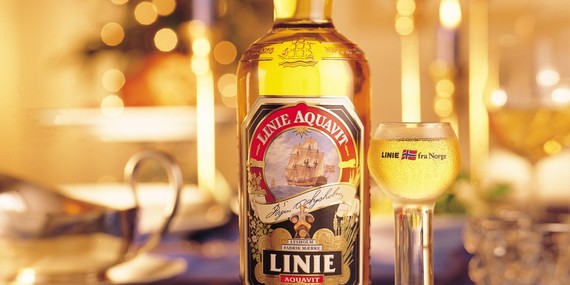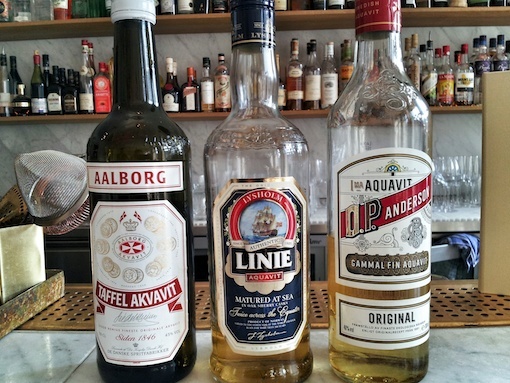
This article was written by Michael McKenna and was originally posted on AskMen.
It is not easy to stay ahead of the curve, spirits-wise. Does it not seem like just yesterday that you were patiently informing your friends about how fine tequila should be sipped and enjoyed "just like whisky"? For how long, exactly, has your "slightly tweaked" Sazerac been a less-than-cutting-edge accessory?
I hope that you will take no offense at the phrase "as 2000s as a white studded belt." The trends, see, they come like endless waves, pulling us under in the rip currents of their withdrawal. Nobody can be au courant for every given sliver of time: It's a rigged game, a carnival set-up. Your only chance is to ignore it or head into the uncharted waters of eccentricity and hope for the best. It is to this end that I ask you: What about aquavit?
Aquavit, of course, is the national firewater of Denmark, Norway and Sweden. Though it has been enjoyed across Scandinavia since the 1400s, it has not yet made any real inroads into the American mixology scene, whose adherents seem to be following carbonation- and liqueur-related tangents to whatever conclusions they will provide. In Copenhagen, however, aquavit (from the Latin aqua vitae, or "water of life") is enjoying a bit of a moment.
In the Danish capital, it seems, the success of René Redzepi's Noma (and "new Nordic" cuisine in general) has left Scandinavians wondering what other local traditions might be primed for a trendy revival. Could it be herring? Open-faced sandwiches? Or might it be, as local mixologist and aquavit expert Nick Kobbernagel-Hovind suspects, that good old lively water?
Kobbernagel-Hovind manages Copenhagen's famed Ruby cocktail bar, and he is bullish about aquavit's appeal, recommending it as an alternative to gin (think aquavit-and-tonic) or vodka (a "Bloody Maja," I guess). It also mixes well in more complex cocktails -- but more on that later. First of all, what is aquavit?
What Is Aquavit?
Aquavit is very much like gin, in that it is a simple grain- or potato-based alcohol to which herbs and spices are added for flavor. According to EU regulations -- aquavit has been named a "protected designation," like Parmesan or Champagne -- the spirit must be at least 37.5% alcohol by volume, and its dominant flavors must be caraway or dill (ordinarily the two are combined, with different locales and manufacturers favoring different ratios).
According to the incredibly informed Kobbernagel-Hovind (Seriously: Sidebars to our origins-of-aquavit discussion included a brief rundown of 17th-century royal marriages, as well as the engravings of William Hogarth), the spirit became hugely and destructively popular shortly after Scandinavia's peasant class figured out how to make it. In the 18th and 19th centuries, he notes, Denmark's farm communities agreed not to make community-wide decisions after 7 a.m., as "everyone would be drunk as shit." In the capital, the Danish military would not issue any orders after 12 p.m. for the same reason.
Similar to a memorable night out, the early beginnings of aquavit production came perilously close to ruining everything.
Make sure to check out these awesome Aquavit recipes.

